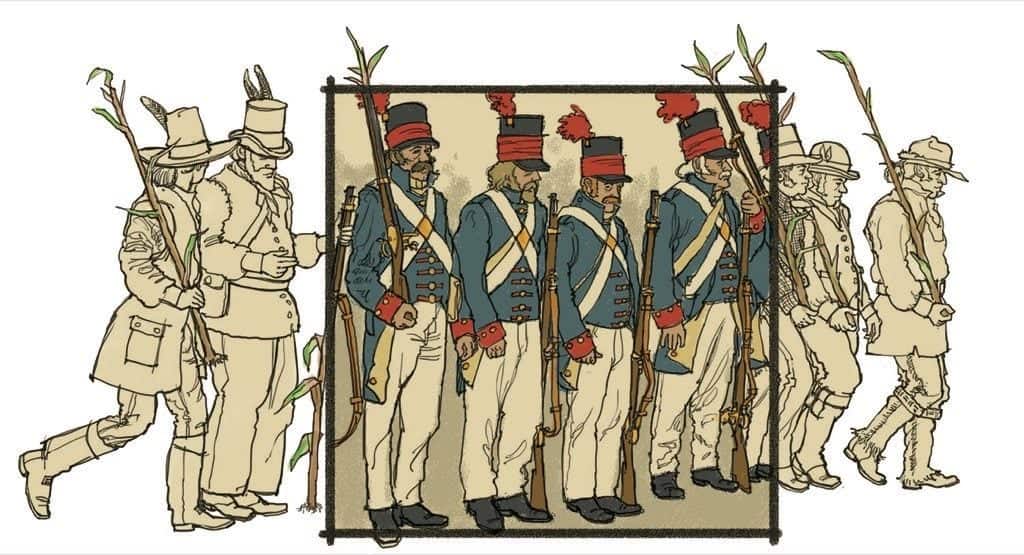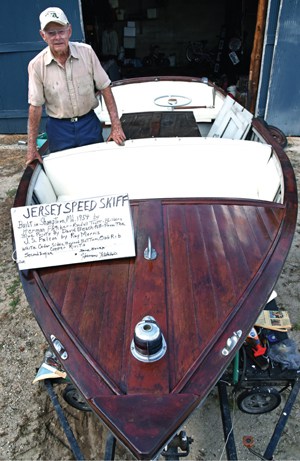Myth-busting the War of 1812
The War of 1812’s Chesapeake Campaign is remembered for its tragedies (the burning of the Nation’s Capital), its triumphs (the defense of Fort McHenry) and its musical legacy (the Star-Spangled Banner). It’s also memorialized by stories of Davidesque defiance against that military Goliath, Great Britain.
Some of those stories might even be true.
In St. Michaels, for instance, legend famously has it that enemy warships overshot the town after citizens hung lanterns in trees. In Urbanna, townspeople supposedly disguised their defenselessness by fashioning a faux fort. Likewise, it’s said in Worcester County that locals shouldered cornstalks and marched by firelight, their silhouettes simulating weaponry they didn’t possess.
But just how stupid were these Brits? Did the leaders of His Majesty’s forces really have clotted cream for brains?
Scott Sheads, a retired National Park Service ranger, has studied the War of 1812, written books about it and helped to develop the Star-Spangled Banner National Historic Trail. He offers an obvious answer. “They’re the enemy. The enemy is always stupid,” says the author-lecturer, breaking into one of his I-love-this-stuff laughs. He’s in his element, the research library at Fort McHenry National Monument, the park where he worked for nearly 40 years and where he still volunteers. A devoted history sleuth, he’ll happily lose himself in the pages of a digitally archived old newspaper (“I have no social life,” he jokes) or tramp a weed-choked 19th-century battlefield.
In researching potential Star-Spangled Banner Trail waypoints, he and fellow historian Ralph Eshelman spent five years visiting more than 1,200 sites around Chesapeake Bay. “Graveyards, churches, homes, sunken vessels—anything to do with dead people we were after,” Sheads says. They examined military documents, diaries and newspaper accounts, American and British, relating to the war.
Afterward, they incorporated their field and scholarly research into a layman’s guide to historic sites. Published in 2010, The War of 1812 in the Chesapeake, co-written with historian Donald Hickey, features concise, illustrated accounts designed to expand the public’s limited perception of the war, Sheads says.
“Fort McHenry and the bombardment and Dolley Madison. That’s it. That’s people’s memory of what the War of 1812 was about,” he says. “Our idea was to introduce new characters to the story besides Francis Scott Key.”
In researching the guide, Sheads and Eshelman unearthed dozens of stories, not all of them readily provable. So they wrote another book, Chesapeake Legends and Lore from the War of 1812, which tries to sort fact from fancy. “History is sometimes derived from fabricated stories that have become so ingrained in our traditions that they have become ‘fact,’” they write in the book’s foreword.
Sheads calls the War of 1812 “probably the most important event that ever happened in Chesapeake Bay. There were a lot of these legends going around. I’d hear a lot of them here [at Fort McHenry].” Family stories invariably star one of the teller’s relatives. “Everybody wants a piece of the action,” Sheads says. “It’s human nature.”
An elderly woman once brought her grandchildren to Fort McHenry and asked Sheads to verify family lore: that on the night of the fort’s infamous bombardment the children’s great-great-grandfather grabbed the flagpole after it was struck by cannon fire. Sheads echoes the family narrative: “And he wrapped his burly arms around that flagpole and held it so Key could write the National Anthem!” Sheads laughs so hard his chair tilts. He says he politely debunked the story, offered the kids a more fact-based account of the battle and managed to assuage grandma too. “She was quite gracious about it.”
Occasionally, historical truthfulness lands him in hot water. Sheads once appeared in a History Channel documentary and discussed the death of British General Robert Ross, shot during the Battle of Baltimore in September 1814. Resentful Baltimoreans confronted him about his unforgiveable omission: He didn’t mention Baltimore’s boy heroes, Daniel Wells and Henry McComas, the young sharpshooters generally credited with the deed.
“Most likely, yes, those two young boys were the ones who shot him,” he says. “But I can’t prove it.” Sheads believes residents got mad because they relate so closely to the story. “That happened in their neighborhood,” he says. “Wells and McComus—they’re [considered] the heroes of the Battle of Baltimore.” True story: Sheads once helped a little boy raise Fort McHenry’s flag only to learn afterwards the lad was General Ross’s great-great-great grandson.
Sheads and Eshelman investigated more than 50 folktales for Legends and Lore. Not all were included. We’ve assembled our own war stories of the we-outwitted-the-British variety. We’ve rated them on our own War of 1812 truth scale ranging from bombs bursting in air (untrue) to four bright stars (true). Where historic sites or evidence remain, we list local resources.
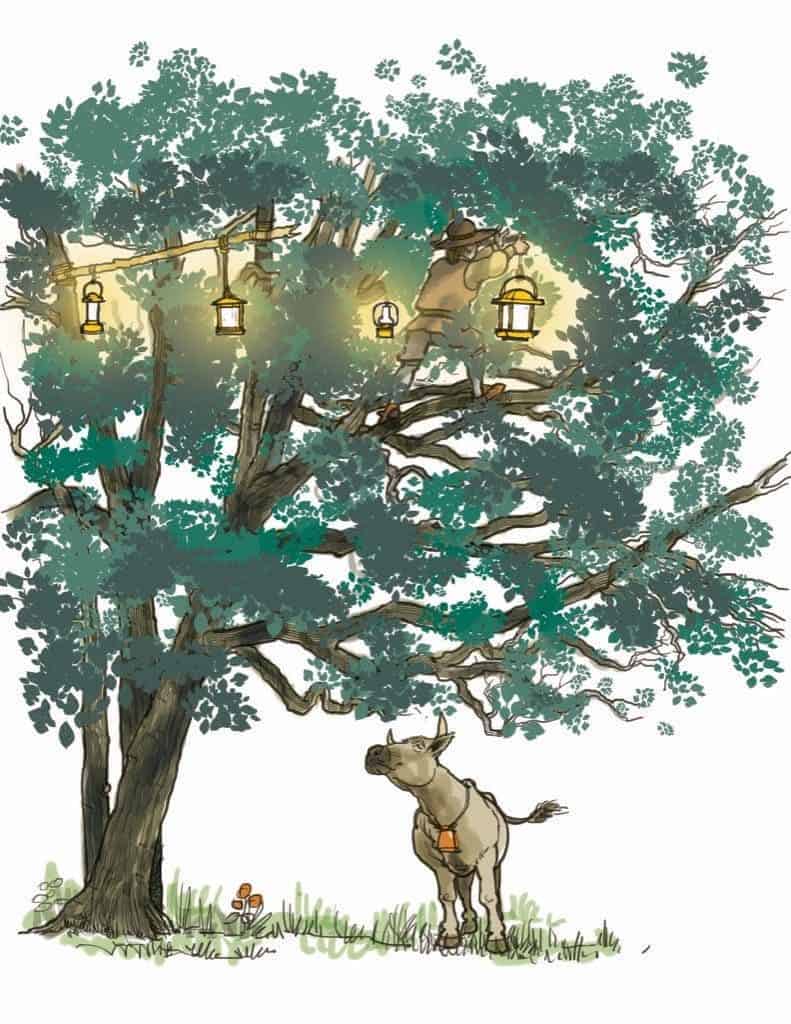
Community Cunning
The Lanterns Ruse—St. Michaels, Md.
Legend: As the oft-told story goes, this Eastern Shore town spectacularly pranked the British during the Battle of St. Michaels. Using the pre-dawn hours as cover, Brits attacked the shipbuilding port Aug. 10, 1813. They first disabled a gun battery guarding the harbor and then returned to their ships to fire in darkness on the village. Legend takes over here. Warned of the enemy’s plans, town fathers decided that what they lacked in cannons they’d make up for with cunning. Ordering lanterns hung from treetops and ships’ masts, they duped the British into aiming their guns too high. Attackers withdraw. Town saved. Future tourism slogan born: “The Town That Fooled the British.”
Our Truth Score:
Folklore Forensics: “A fairly easy one to do,” Sheads says of his investigation. “I went to the newspapers first.” He says he found nada—until 1886. That year the Baltimore American published an interview with an 86-year-old man who said he was present (at age 13) when the lanterns were allegedly hung. Newspapers celebrating the battle’s centennial perpetuated his tale, which historians gradually debunked. Military accounts proved dawn had arrived by the time of the cannonade, making the target visible. Nor did the town have time to prepare. “Myth,” Sheads and Eshelman declare of this beloved story in Legends and Lore—adding, “which may not be such a bad thing.”
Oh, Say You Can See: Proof of some British competence? The Cannon Ball House, struck that day by a ball that crashed the attic and bounced down the stairs. It’s a private residence, but the town is awash in accessible 1812-era history, told especially well at St. Michaels Museum and Chesapeake Bay Maritime Museum.
The Faked Fort—Urbanna, Va.
Legend: With enemy ships menacing towns along the Rappahannock River, Urbanna residents were getting nervous. They had neither the weapons nor manpower to engage the invaders. What to do? Folklore says they decided to build a “fort,” an earthen wall hastily erected on a hilltop overlooking the entrance to Urbanna Creek. To make their creation plausibly fort-like and menacing, they added cannons—phony ones. “They took wagon wheels, placing them in position, and mounted tree trunks in between pointing out of the creek,” according to one written account. “Fort Nonsense” was ready for war. But which war? Some accounts claim the fort duped the British in 1814; others say Union gunboats in the Civil War.
Our Truth Score:
Folklore Forensics: In Signatures in Time: A History of Middlesex County, historian and Urbanna native Larry Chowning writes that Fort Nonsense appeared in 1814 in response to British attacks along the river. Ironically, the primary source for the alternative version is a distant relative of his, he says. “Other books cite a similar Civil War story and attribute [it] to Edmonia Palmer, who was my great-grandfather’s sister. I never knew her, but from what I’ve heard I can’t imagine she would make it up.”
Oh, Say You Can See: An early 20th-century house known as Fort Nonsense stands on the site of its Urbanna namesake. (Not to be confused with Fort Nonsense Historical Park in nearby Mathews County, which includes the remains of a once-functional Civil War earthwork, built with slave labor.)
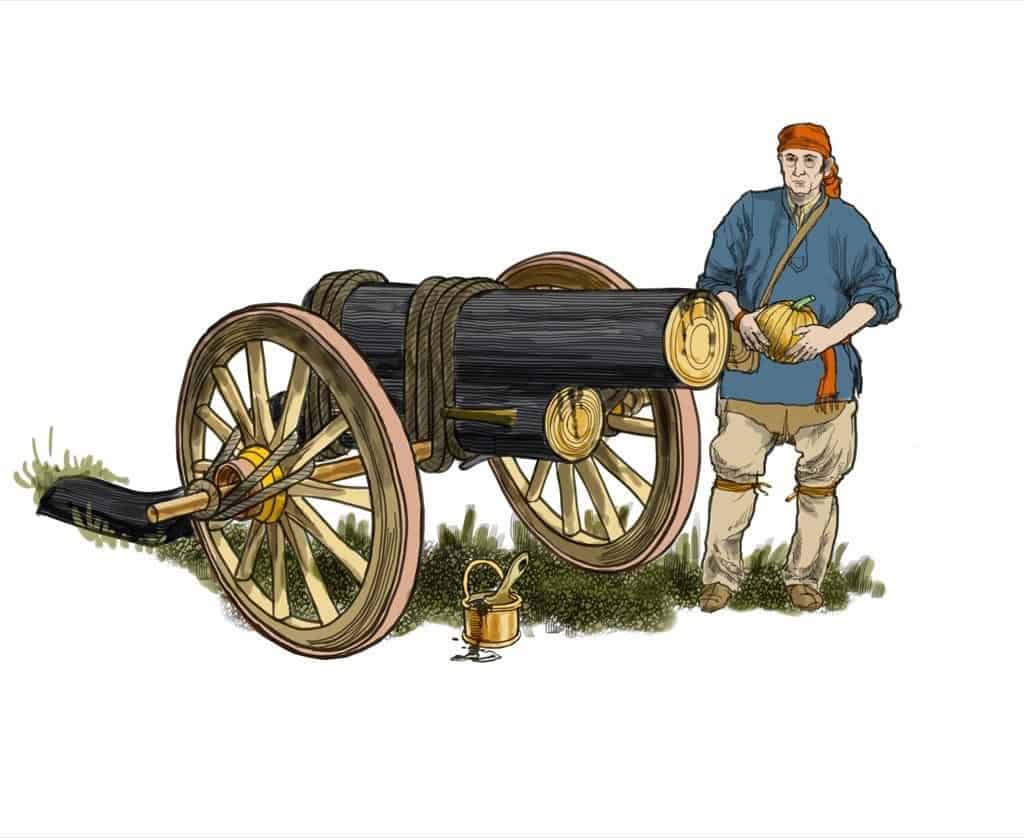
Improvised Weaponry
Pine Tree Catapult—Calvert County, Md.
Legend: British forces roved the Patuxent River in 1814, chasing Commodore Joshua Barney’s barge flotilla while plundering towns, warehouses and plantations. Among their targets was Abington Manor, a plantation on the upper Patuxent’s eastern shore whose mansion was set ablaze August 22. The house was largely spared when a heavy rainstorm and servants doused the flames, but Maryland militiamen sought revenge. They reportedly sank two British barges with an unusual bluff-top bombardment. Using pine saplings as a makeshift catapult, “they rained flaming bales of wool, soaked in tar” on the enemy vessels, whose commander ordered his remaining ships scuttled, according to one later account.
Our Truth Score:
Folklore Forensics: Eshelman and Sheads found no contemporary catapult story and believe this may be a fanciful depiction of two different events in which the house was burned but no skirmishing British barges were lost. “An interesting story that must be considered a myth,” they conclude. Plus, ponder the mechanics of flinging large flaming objects from pint-sized evergreens. Pull back sapling. Load and ignite bale. Watch it incinerate catapult and/or operators instead.
Oh, Say You Can See: Abington Manor is gone; only a namesake road remains. For fact-based war accounts see “Farmers, Patriots and Traitors: Southern Maryland and the War of 1812,” an exhibit at Jefferson Patterson Park & Museum in St. Leonard.
Faux Guns—Maryland’s Eastern Shore
Legends: Legends and Lore cites several stories in which crafty locals repurposed ordinary objects to mimic muskets, hoodwinking the enemy. The most documentable tale allegedly occurred in the wee hours of May 19, 1814, along the Big Annemessex River in Somerset County. A militia captain ordered local men to patrol the shoreline with sticks on their shoulders while he dispatched ships to repel a British raiding party. (The authors recount a similar, undated and undocumented tale in Worcester County near Chincoteague Bay in which the phony army, its leader on horseback, used cornstalk “guns” and trooped around a campfire.)
Our Truth Score:
Folklore Forensics: Eshelman and Sheads say the Somerset County ruse, while unproven, is at least credible because a local newspaper documented the incident within days of its supposed occurrence.
Oh, Say You Can See: Worcester County’s notable contribution to the war was naval hero Stephen Decatur, born in Sinepuxent near Berlin. His birthplace no longer stands, but the U.S. Naval Academy Museum in Annapolis holds Decatur artifacts.
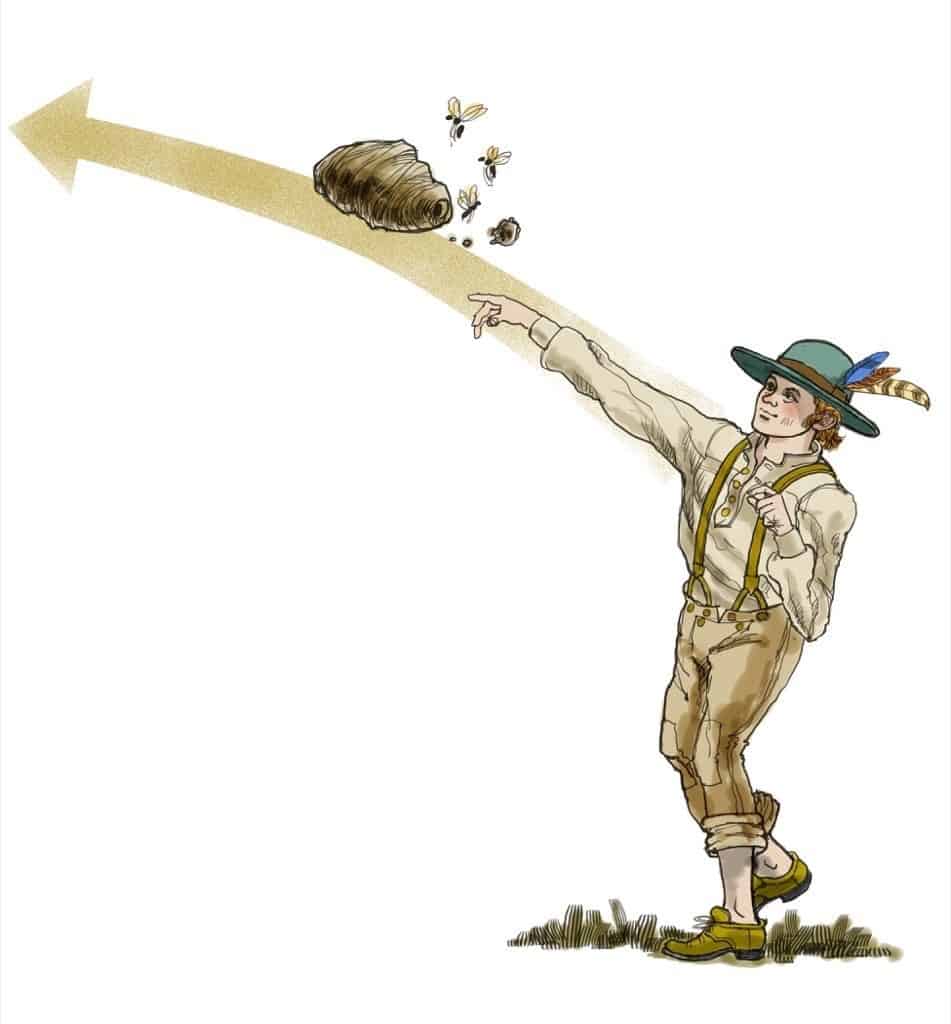
Bee Bombs—Mathews County, Va., et al
Legend: The Jan. 11, 1898, edition of the Baltimore Sun contained a third-hand account of a painful prank played on British sailors aboard a gunboat off Mathews County during the war. A local boy found an inhabited wasps’ nest, which he sealed by plugging its entry with mud. Shown the boy’s prize, the sailors asked what it was. A nest of hummingbirds, he explained, can’t your hear them? He gave them the buzzing nest and left. “The British took out the mud plug and at once the escaping wasps ‘proceeded to business,’” the Sun reported. “They never stopped their work until they had made everyone of the British sailors jump into the water to escape.”
Our Truth Score:
Folklore Forensics: The Sun article cited an unnamed source in Crisfield. Newspapers often reprinted stories that appeared in other papers, says Sheads, who found detailed accounts of Chesapeake war encounters in New England newspapers, for instance. He and Eshelman traced this tale to the father of a Crisfield customs collector. They also found variations of it, involving hornets’ nests, set in Lower Marlboro, Md., and during the Battle of Baltimore. Does a swarm of p-o’d bee stories lend them credence? Sheads thinks yes.
Oh, Say You Can See: The large, sphere-shaped paper bees’ nests found in the Chesapeake are made by either baldfaced hornets (a large wasp) or aerial-nesting yellowjackets (medium to large wasps). We advise against making bee bombs with either.
Hometown Heroes & Heroines
John & Matilda O’Neill—Havre de Grace, Md.
Legend: When British forces attacked Havre de Grace on May 3, 1813, most local militiamen took to the woods. Except for one. Lt. John O’Neill single-handed a cannon at the so-called Potato Battery on Concord Point until the weapon recoiled and smashed his leg. Undeterred, he limped into town, wielded a musket and continued to resist until taken prisoner. The legend’s denouement has O’Neill’s teenage daughter rowing out to Rear Admiral George Cockburn’s frigate to successfully plead for her father’s release. For her bravery, the admiral gave Matilda O’Neill his gold-mounted, tortoiseshell snuffbox.
Our Truth Score:
Folklore Forensics: Lieutenant O’Neill’s heroics are well documented, and Havre de Grace demonstrated its undying gratitude by naming him the first keeper of Concord Point Lighthouse. Matilda’s role is murkier. Dad never specifically mentions her in recounting his release. In Legends and Lore, Eshelman and Sheads say documents indicate town magistrates petitioned to free POW O’Neill, although Matilda may have made a personal appeal to Cockburn, too. The authors also conclude from examining it that the admiral’s “snuffbox” is curiously free of tobacco stains or odor, meaning it was probably a decorative trinket.
Oh, Say You Can See: In Havre de Grace, a circa 1812 cannon stands where O’Neill manned the Concord Point battery, and a plaque on Union Avenue marks the site of Matilda’s home. In Baltimore, the Maryland Historical Society has both the chivalrous Cockburn’s tortoiseshell box and an ornate sword presented to John O’Neill by admiring Philadelphians in 1813.
Kitty Knight—Georgetown, Md.
Legend: When the British burned the twin Sassafras River villages of Fredericktown and Georgetown on May 28, 1813, one woman is credited with preventing Georgetown’s complete devastation. Catherine “Kitty” Knight reportedly defied His Majesty’s forces when—having destroyed nearly everything else—they set fire to an elderly woman’s house and another next door. It’s said Knight pleaded successfully with Admiral Cockburn to spare the dwellings, even stomping out the flames herself. A more embellished version has Knight declaring, “If you burn this house, you burn me with it.”
Our Truth Score:
Folklore Forensics: Historians cite oral remembrances by participants, but the most eloquent testimony to Knight’s actions was published upon her death in 1855. Her obituary in the Cecil Whig states: “Her appeal so moved [Cockburn] that he ordered the troops to their barges and left unburned a church and several houses standing at Georgetown.” The never-married Knight is buried with other members of her prominent family in Old Bohemia Churchyard, Warwick. Her tombstone honors “a maiden fair with courage bold.”
Oh, Say You Can See: Knight later purchased one of the houses she saved. Today, the Kitty Knight House survives as an inn and tavern whose owner rescued and restored the hilltop structure, which incorporates both Kitty-spared houses.
As Sheads sees it, history is composed of actual events as well as the stories we tell. “These legends, whether they’re true or not— and there’s some truth to them—they are part of the story,” he says. “That’s why we remember them today.”
The Chesapeake’s War of 1812 legacy should include more than a lawyer-turned- anthem-writer and a First Lady who rescued a priceless portrait, he argues. Residents of places other than Baltimore and Washington need ownership of their stories, too, he says. “That’s all people want in life; let me be a part of something.”
And what of the blundering British? Well, think of the story General Ross’s great-great-grandson can tell his kids: I raised that flag my forefather fought to capture.

